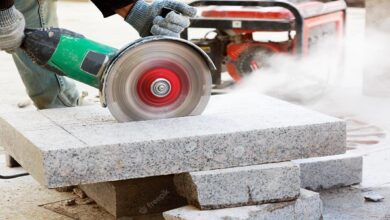Understanding the Difference between Concrete Coating and Epoxy
Concrete Coating Vs Epoxy

- Is concrete coating the same as epoxy?
- What is epoxy concrete coating?
- What is the difference between epoxy and coating?
- What concrete coating is stronger than epoxy?
Concrete surfaces are widely used in various industries and applications due to their durability and strength. However, to enhance their appearance, protect against wear and tear, and provide additional functionality, concrete coatings and epoxy systems are often applied.
While both concrete coatings and epoxy serve similar purposes, they differ in terms of composition, application methods, and performance characteristics. In this article, we will explore the difference between concrete coatings and epoxy, shedding light on their unique features and applications.
Concrete Coatings:
Concrete coatings are thin protective layers applied to the surface of concrete to enhance its appearance and protect it from damage. They are typically made of polymers, such as acrylics, urethanes, or epoxies, and come in various formulations to cater to specific needs. Key characteristics of concrete coatings include:
Thickness: Concrete coatings are relatively thin, typically ranging from 10 to 30 mils (0.01 to 0.03 inches) in thickness. This makes them suitable for applications where a seamless, smooth, and aesthetically pleasing finish is desired.
Decorative Appeal: Concrete coatings are available in a wide range of colors, textures, and patterns. They can be customized to match specific design requirements, making them popular in commercial, residential, and industrial settings.
Protection: Concrete coatings provide a protective barrier against stains, chemicals, UV radiation, and abrasion. They can enhance the durability of the underlying concrete, extending its lifespan and reducing maintenance requirements.
Slip Resistance: Many concrete coatings offer slip-resistant properties, making them suitable for areas where safety is a concern, such as walkways, driveways, or commercial floors.
Application: Concrete coatings are typically applied using rollers, brushes, or sprayers. They require proper surface preparation, including cleaning, etching, and priming, to ensure optimal adhesion and longevity.
Epoxy Systems:
Epoxy is a type of resin that, when combined with a hardener, forms a rigid and chemically resistant coating. Epoxy systems are widely used in various industrial, commercial, and residential applications. Key characteristics of epoxy systems include:
- Thickness: Epoxy coatings are relatively thicker than concrete coatings, typically ranging from 30 to 125 mils (0.03 to 0.125 inches) in thickness. This thickness provides excellent protection and durability for high-traffic areas or surfaces exposed to heavy machinery or chemicals.
- Chemical Resistance: Epoxy systems offer exceptional chemical resistance, making them suitable for environments where exposure to acids, solvents, or oils is common. They can withstand corrosive substances and prevent degradation of the concrete substrate.
- Strength and Durability: Epoxy coatings exhibit high compressive and tensile strength, enhancing the structural integrity of the underlying concrete. They are resistant to impact, abrasion, and heavy loads, making them ideal for industrial floors, garage floors, or warehouse surfaces.
- Seamless and Impermeable: Epoxy forms a seamless and impermeable surface when properly applied, preventing the penetration of liquids, stains, or contaminants into the concrete. This feature contributes to easier cleaning and maintenance.
- Application: Epoxy systems require careful surface preparation, including cleaning, repairing cracks or damages, and applying a primer. They are typically applied using rollers or squeegees, followed by backrolling to ensure an even coating.
Differences and Applications:
The primary difference between concrete coatings and epoxy lies in their composition, thickness, and performance characteristics. Concrete coatings are versatile, thin protective layers that offer decorative appeal, protection against damage, and some resistance to stains and chemicals. They are commonly used in residential, commercial, and industrial settings where aesthetics and moderate protection are desired, such as residential garages, patios, or retail spaces.
On the other hand, epoxy systems provide a thicker and more robust coating with superior chemical resistance, durability, and strength. They are ideal for industrial environments, manufacturing facilities, automotive shops, or areas subject to heavy traffic and potential chemical spills. Epoxy coatings excel in providing long-lasting protection and maintaining the structural integrity of the concrete substrate.
In summary, the choice between concrete coatings and epoxy depends on the specific requirements of the project. Concrete coatings are suitable for applications where aesthetic enhancement and moderate protection are desired, while epoxy systems are preferred for high-performance environments that demand exceptional durability and chemical resistance.
Conclusion
Understanding the difference between concrete coatings and epoxy is crucial when considering surface protection and enhancement for concrete structures. While both serve to improve the appearance and durability of concrete surfaces, they differ in terms of composition, thickness, and performance characteristics.
Concrete coatings offer decorative appeal, moderate protection against stains and chemicals, and are suitable for various residential, commercial, and light industrial applications. They provide an aesthetically pleasing finish and help extend the lifespan of the underlying concrete.
Epoxy systems, on the other hand, provide a thicker and more durable coating with exceptional chemical resistance, strength, and durability. They are commonly used in industrial settings and areas exposed to heavy traffic, chemicals, or potential impact.



